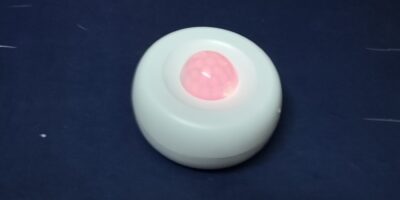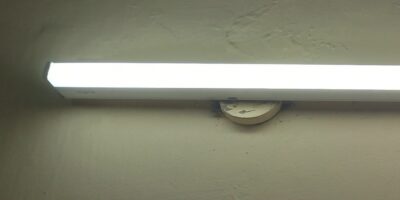
How close do you want your smart wearables? What about right against your eyes? Unlike smart glasses, smart contacts are far more discreet. The only thing you need to do to use them is to move your eyes. It sounds simple enough, but how useful are they really?
Why Smart Glasses Failed

Google Glass seemed like a great idea – at first. There are actually many great uses for smart glasses. However, there were privacy concerns from the start. Also, no one was really sure what the benefits were for general users. This ultimately led to Google Glass failing versus becoming the amazing new technology everyone had to have. So, why would anyone bother creating smart contacts?
Smart Contacts Aren’t New
It shouldn’t come as a surprise that companies were already hard at work on smart contacts years ago. For instance, Google announced a project in 2014 designed to help people with diabetes. The lenses would change based on a person’s tears to help them measure glucose levels easier.
Samsung took a different approach and was granted a patent in 2016 for a more AR-focused lens. Naturally, other companies have either filed patents or started researching the possible applications for smart lenses. The possibilities are so promising for both entertainment and medical purposes that experts believe the smart contact lens market will grow by a 10.4 percent CAGR (compound annual growth rate) through 2023.
The Latest Smart Contacts Release
As you might have realized, smart contacts aren’t exactly readily available to the public. Most are still in testing phasing or have never even made it to actual product testing. However, Mojo Vision showcased the Mojo Lens at CES 2020. While it was just a prototype, product development is in the works.
One issue contact lenses have over smart glasses is the battery. You can’t have a bulky battery against your eye. As a temporary solution, Mojo Vision is using a wrist device to help with power and computing. However, the company is planning to switch to a smartphone option if possible to avoid having to wear both the lenses and the wrist device.

The most promising aspect is helping people with vision issues see more clearly. From correcting vision problems to seeing better in the dark, simply wearing a lens could help people that normal corrective lenses aren’t able to. While it won’t cure vision problems, it’s a solution that adjusts to a wearer’s unique needs while they wear it.
The lens has a variety of uses and keeps any information that pops up at eye level to make it easier to use without disrupting what you’re doing. For example, instead of having to look up and tripping over a rock, the information would stay around the center of your eye to keep the data and the world around you in better focus.
Controlling the lens involves moving your eye. Obviously, you might look a little weird flicking your eyes all over the place to check out notifications and dismiss them. But, it’s no weirder than walking around looking like you’re talking to yourself when you’re wearing a Bluetooth earpiece.
The Pros and Cons
Unlike smart glasses, smart contacts don’t seem to be as focused on recording things around you. Instead, Mojo Vision’s version uses images around you to determine if you need something, such as reminding you of the building number when you’re on a certain road or sharpening your vision in bright or low light. Of course, full privacy issues are yet to be seen.

On the other hand, you may worry about putting technology directly against your eye. However, Mojo Lens has been FDA-approved for development, meaning it’s safe to place against your eye. While further testing is obviously needed, so far, it’s been proven safe.
It’s an interesting new development in the market. The exact feature list hasn’t been released yet, mainly because it may change as the product is fully developed. If Mojo Lens goes over well, you can expect to see other companies start moving forward more quickly with their projects.








